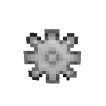Search the Community
Showing results for tags 'solvers'.
-
Hi, just wondering if anyone could shine some light on where I am making my mistake within my pipeline? Currently just trying to make my object destroy my said geometry but its pre-breaking before contact? wondering if its because I am not using glue constraints correctly(have tried to use that way) but can't seem to think of what I am doing incorrectly? My next question is offsetting the timer, I have gone into the rdb nodes in the image below and ticked boxes around the creation frame, but it doesn't offset it as it makes it disappear from my scene until the new selected frame. Help is high appreciated as this is contributing to a final grade!!
- 2 replies
-
- destruction
- solvers
-
(and 1 more)
Tagged with:
-
Physarum, an experimental animation designed to show off a slime mold simulation, based on a research paper by Jeff Jones. What started as a redshift renderer test, quickly evolved into something much larger. Soon after implementing the paper in Houdini, I realized the simulation could be used to generate some pretty incredible designs. In this case the simulation is attempting find the most optimal paths through a given volume, creating tube like structures that are constantly evolving. I can attach the project file if there's any interest! If you are interested in reading the original paper, here’s a link to that: eprints.uwe.ac.uk/15260/1/artl.2010.16.2.pdf Bonus wireframe simulation showing my first 3D implementation of the algorithm: vimeo.com/182029750/74f8965df6 Bonus steiner tree example: vimeo.com/181717693/fe912eb22b
-
Hi peeps, I'm using the SOP solver DOP to change my geometry overtime from one sphere to multiple spheres, however, when the geometry changes to multiple spheres it's still behaving like just one object instead of individual spheres and I can't figure out why! Any help would be much appreciated and I've attached the troublesome scene file. Also, I used the RBD Fracture object for this instead of the RBD packed, because I couldn't get the results out of the SOP solver to work with RBD packed object. I unpacked the geo in the SOP solver and repacked the output with the name attribute and it wouldn't work, so also, if anyone could shed some light on that as well it would be much appreciated. Thanks. RBDs_SOP_solver_testing_01.hip
-
I'm trying to use the FEM solver for a car crash destruction and I need some pointers or tips. The effect is looking great for about 5 frames after the crash, but after about 15 frames the car returns back to it's original shape, which is not what I want. Which leads me to Question #1: How can I keep that crashed shape without simply animating the whole object's Damping Ratio? If I do animate the damping ratio to be an absurdly high value after the crash, the effect works great for the crashed area but the car loses all of its kinetic motion and the car just stops. I've tried to use the SOP Solver to set attributes on the FEM geo but this doesn't seem to be working, so Question #2: Are the FEM and SOP solvers incompatible? It's very possible that I'm not wiring these correctly, but it seems like the SOP solver is not correctly reading the FEM data, after about 8 frames the SOP solver gives me a warning saying that it fetched old data and it doesn't seem to be capable of viewing the entire animation. Also I don't seem to be able to set primitive attributes like soliddampingratio and have it work correctly in the FEM solver. Is this help page out of date with H16.5? Basically what I think I want is for the Damping Ratio or the Shape Stiffness to be drastically raised for the primitives where there is crash damage and I would like the solver to see the crashed shape as the new rest shape so it no longer returns back to its original state. Thanks in advance for any help on this. And to anyone wondering about using other solvers (cloth or wire) I've found that the FEM solver gives me the best crash results because of the volume preservation.
- 2 replies
-
- destruction
- effects
-
(and 2 more)
Tagged with:
-
I'm gradually trying to learn various of Houdini's solvers (primarily cloth, pyro, and bullet for now) and I'm slowly getting to grips with how they work individually. What I'm struggling to understand, and also struggling to find good learning resources for, are the ways to create interaction between multiple solvers. I'm interested in setups for one-way interaction (eg. pyro affected by bullet/rbd sims) but even more keen to understand two-way (or more) interactions. For example, how to have cloth and bullet (and perhaps pyro as well) all working mutually in a dynamic simulation, all affecting each other. Can someone point me in the right direction towards learning how to combine different solvers together? Are there generic ways for doing this (in other words combining cloth and bullet would involve the same understanding/setup as combining pyro and cloth), or does every solver/combination have its own idiosyncrasies when trying to combine? I found this video about combining pop and bullet solvers: https://www.sidefx.com/tutorials/combining-solvers-with-a-multi-solver/ I assume a good understanding of the multisolver is key here. But the multisolver doesn't accept the cloth solver as an input, so it seems like there must be more to it than that... Any help much appreciated!
-
Heya folks, I've been trying to test out a setup where a volume inherits color from geometry which in turn is used to color smoke simulations. I have a attached a file with my setup - where I'm initializing a tempCd field and then transfering that to a Cd field with gas calculate and then advecting Cd with vel. However, the issue with the sim is the fact that it refuses to initialize multiple colors. I hope somebody can help me figure out how to troubleshoot this issue. Thank you! smoke_color_sim_test.hipnc
-
Hi everyone I'm using a smoke simulation where a simple source is dripping smoke on a collision box. The collision uses the sourcevolume method, so I have the SDF collision available. I'd like to create an additional field which is nothing else than the result between the multiplication (intersection) between the collision field (after gassdftofog) and the density field. Basically I'd like to use this resulting field into a pyro symulation (a separated sim) as fuel to emit fire. The result would be that some fire emits from the locations of the cube where the smoke is dripping. I used a match field to fill a field "collisioncopy" scalar field, and filling it with the content of the collision sdf after converting it to fog. Then I used a gaslinearcombination with the folliwing calculation collisioncopy=collisioncopy*density The problem i have is that obviously the collision field and the density field are mutually excusive so the result is an empty field. My question is: is there some quick and dirty way to "expand" a certain field by a certain amount of voxels (in the direction of the gradient of its density for instance). This way i would be able to have an overlapping area between my collision field and the density and I could calculate the intersection between them.




